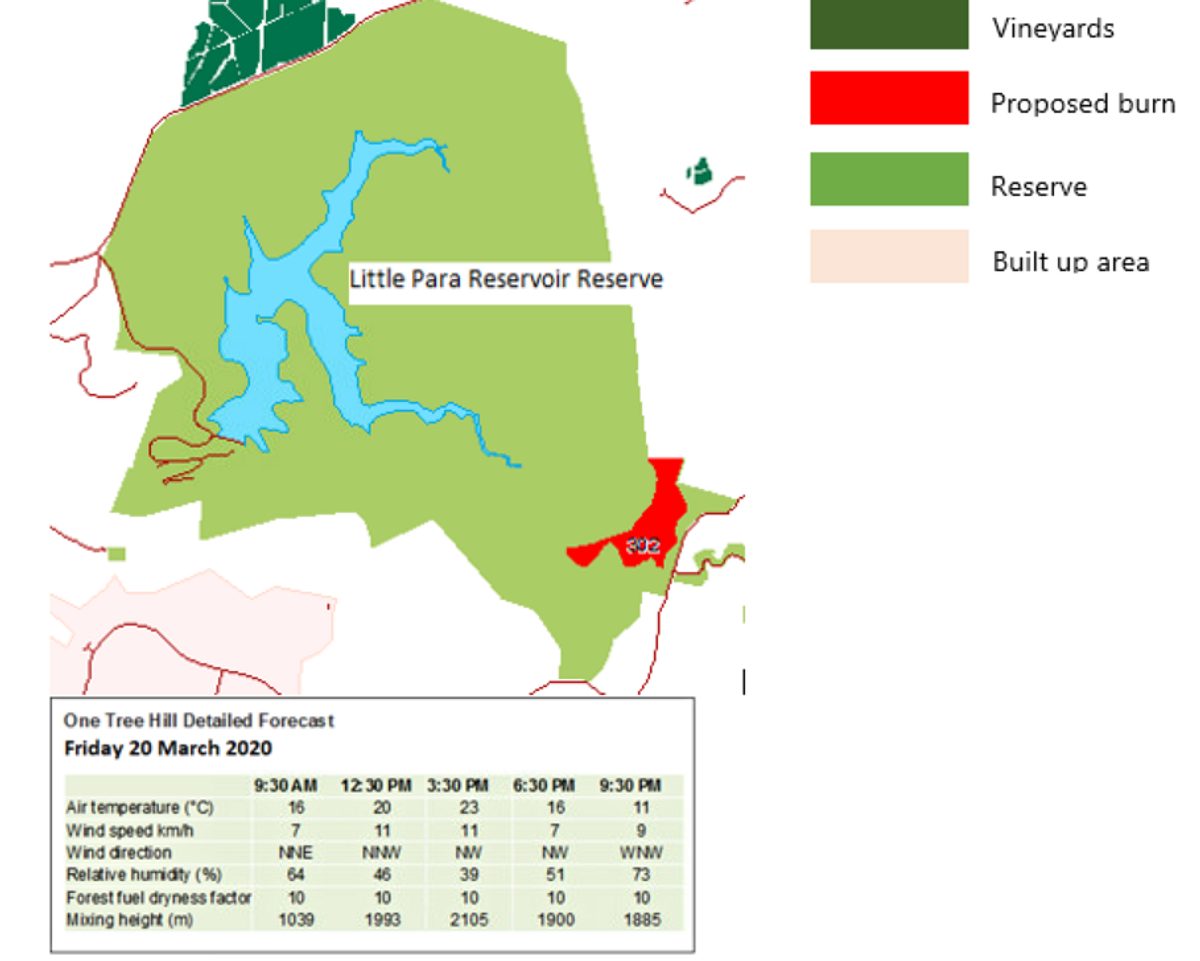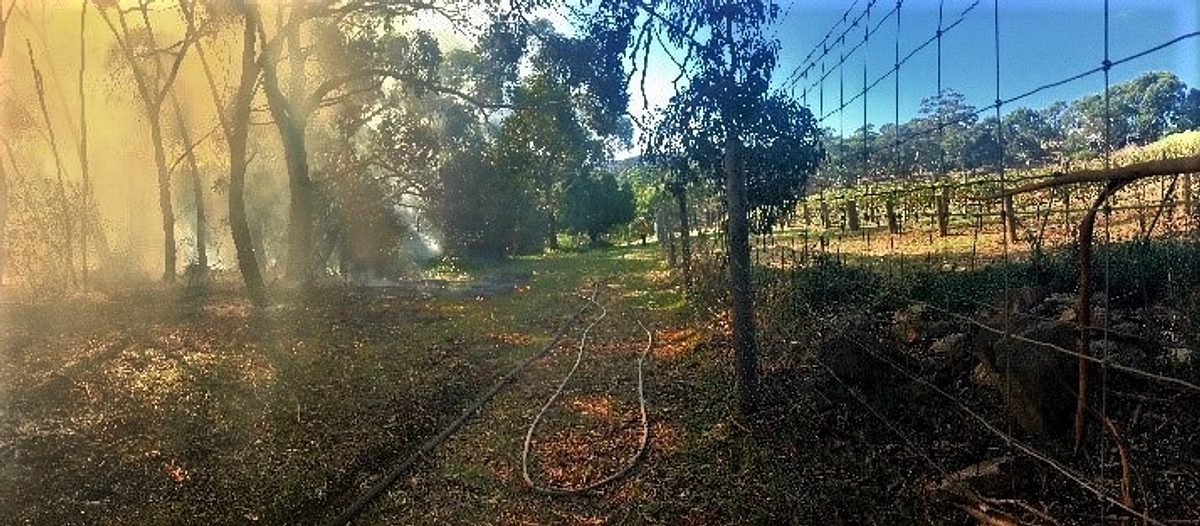Smoke management: wine grapes and prescribed burning in the Mount Lofty Ranges
Smoke taint affecting wine grapes has emerged as an issue following prolonged smoke exposure to grapes from significant bushfire events in wine grape growing regions of Australia. Prescribed burning is undertaken to reduce bushfire risk, but concern has been raised by growers about burns potentially causing the same issue.
While prescribed burns in the Mt Lofty Ranges are usually small in scale and duration the potential impact from smoke still needs to be managed appropriately.
National Parks and Wildlife Service (NPWS) uses prescribed burning to reduce fuel loads across strategic areas of public and private land to help limit the spread and intensity of bushfires and protect communities and the environment.
Smoke impacts from NPWS prescribed burns are managed carefully and, due to strategic steps taken to reduce the risk of smoke taint, it has not been known to occur as a result of prescribed burning in South Australia.
NPWS staff always work to reduce the risk of smoke exposure, and balance this with the need to reduce the risk of bushfire to the community and industry, including grape growers and other primary producers.
The issue
Grapevines exposed to heavy or prolonged smoke during sensitive growing periods may produce wine that displays smoke-like aromas which can render wine unfit for sale and consumption. This can result in significant financial loss for wine grape growers.
What is smoke made of?
Smoke is comprised of a variety of gases, and airborne solid and liquid particulates. The main compounds responsible for smoke taint in grapes are volatile phenols such as guaiacol, 4-methylguaiacol and cresols.
Vineyards near parks
In South Australia, vineyards are mostly found in the Mount Lofty Ranges, Riverland, South East, Clare Valley, McLaren Vale, Barossa Valley, Fleurieu Peninsula and parts of Kangaroo Island.
Prescribed burning in the Mount Lofty Ranges poses the greatest risk to grapes due to the proximity of burn sites to vineyards.
Reducing the risk of smoke taint
NPWS is committed to reducing the risk of smoke taint by following these steps:
- identifying prescribed burns which may impact neighbouring vineyards (see Figure 1)
- liaising with Vinehealth Australia and wine industry groups regarding the status of the grape harvest
- choosing a day with favourable wind conditions to avoid smoke exposure to neighbouring vineyards which have not been harvested
- contacting the Bureau of Meteorology for its smoke modelling tools to predict smoke dispersion
- rescheduling a burn if conditions are not favourable
- monitoring weather conditions during the burn and changing the lighting pattern or postponing the burn if conditions become unsuitable
- assessing potential impacts from smoke drift or inversion layers.


Why prescribed burning is important
Fire is a natural part of the South Australian landscape and even the best prevention activities can’t stop bushfires occurring during extreme or catastrophic fire weather events. However, reducing fuel loads does reduce the speed and intensity at which a bushfire burns, which can reduce the risk to lives, homes, assets and the environment.
Before an area is considered for a burn a huge amount of planning and assessment is done, including looking at the big picture. Each year between 40 and 60 burns are undertaken in the Adelaide and Mount Lofty Ranges region, covering up to 1000 hectares.
Smoke is always a consideration, especially when burning close to vulnerable communities such as nursing homes, hospitals and schools, and primary producers such as orchards and vineyards. To minimise this impact, NPWS will consult with the CFS, local councils, private landholders and agricultural groups before a burn is scheduled.
On the day of the burn the right combination of fuel load, fuel moisture, temperature, relative humidity and wind speed is needed to ensure the burn is safe and effective. This limits prescribed burning to certain days during spring and autumn when conditions are suitable.
For this reason it can be difficult to avoid an overlap with grape ripening, particularly when grape harvest is delayed.
Risk to vines
Smoke from bushfires can negatively impact the quality of grapes used in wine production. As soon as flowering is complete and berries are formed, the grapes are at risk throughout the ripening period and until they are harvested. Repeated smoke exposure, and exposure over a long period, have both been found to result in an accumulation of smoke compounds in grapes and resulting wines. However, a carry-over effect from one growing season to the next has not been found.
What to expect in autumn
Grape growers should be aware that burns are also carried out by private landowners and ForestrySA. If you are concerned about smoke from other sources please contact your local council (which issues permits during the fire danger season) or the Environment Protection Authority.
NPWS will continue to liaise with Vinehealth Australia and wine industry groups regarding vineyard locations, and their harvest status, in proposed burn areas.
Explore upcoming prescribed burns in your area with NPWS’ interactive map, and sign up for updates straight to your inbox.


